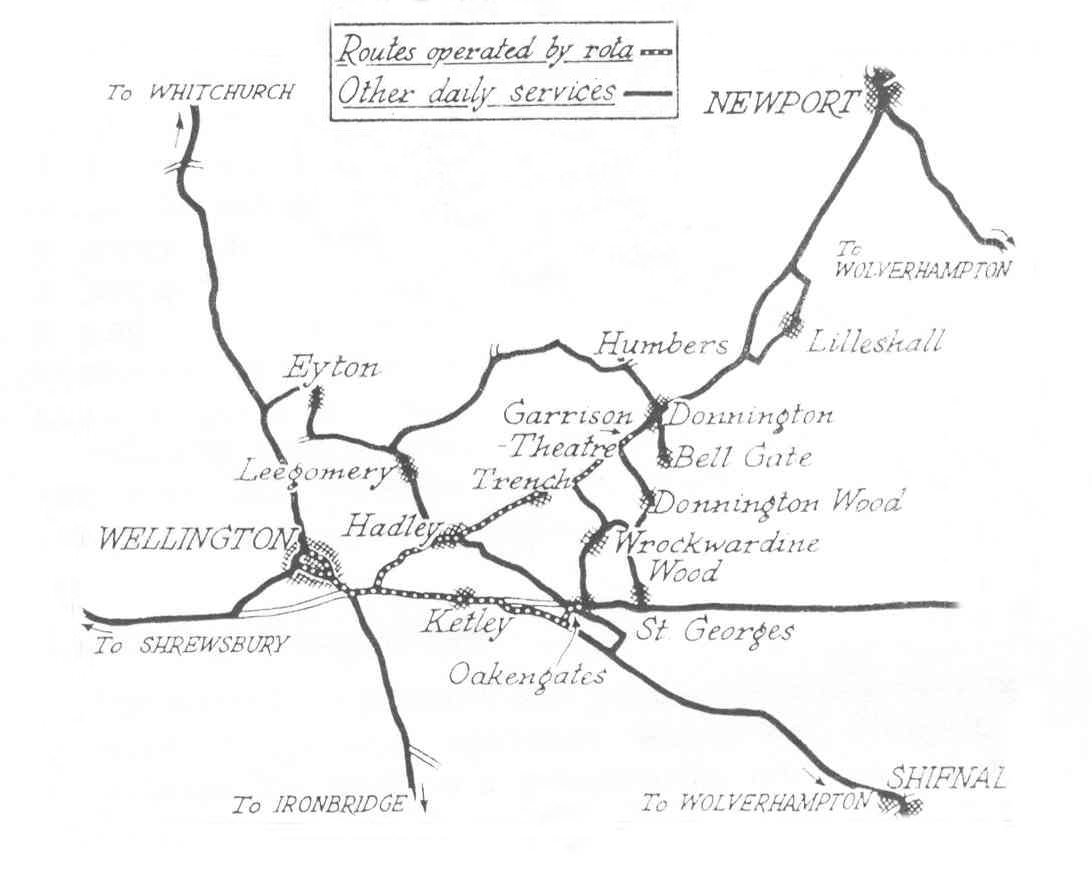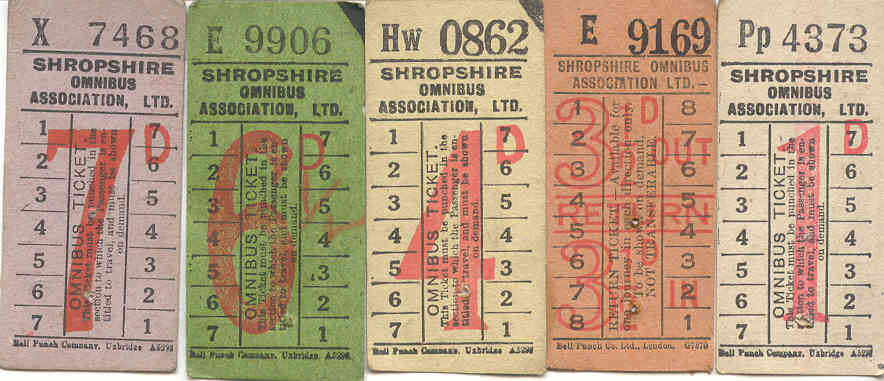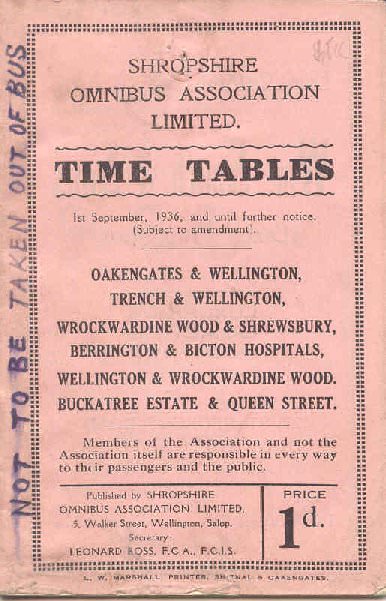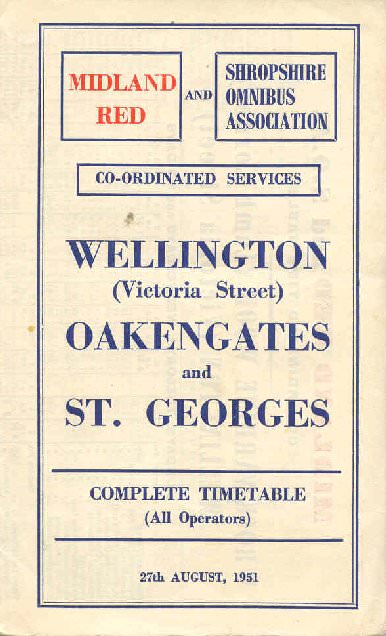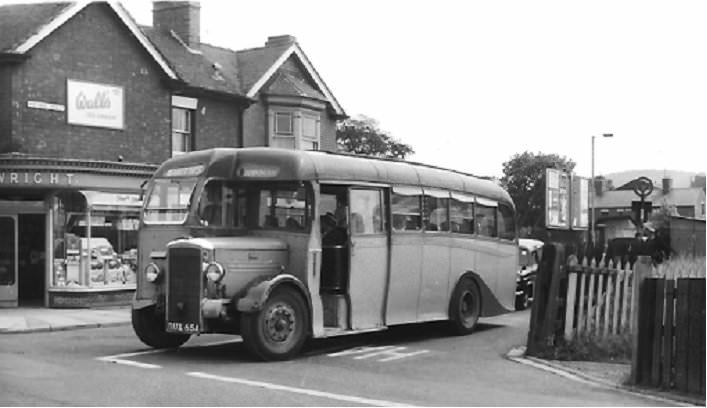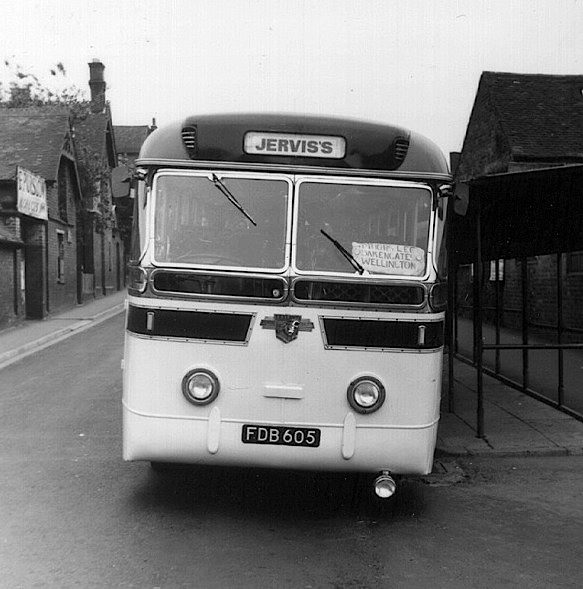|
||||||||||||||
|
||||||||||||||
| Please
note - this is a site of historical record and does not contain current
service information |
||||||||||||||
|
An
important caveat - the history of SOA is a long and complex one
and despite gathering information from a range of sources I cannot
claim that I have necessarily managed to get everything in the story
absolutely right! With that in mind I recommend a book by Neville
Mercer entitled "Independent Buses in Shropshire", especially pages 80
to 124 which deal with the SOA operating areas of Wellington and
Telford. Published in 2011 by Venture Publications, ISBN 978
1905 304 417.
|
||||||||||||||
|
I have
always found a particular interest and fascination over the years in
what I call "rota" operations. By that I mean a route or routes
which were worked co-operatively by several private companies, with the
particular journeys worked changing from week to week or month to month
according to a rota, so that all took their share of the good and the
not so good timings. Amongst the ones I know about are (or rather
were):
|
||||||||||||||
|
Scotland: A1 Service (Ayrshire Bus Owners Ltd)
:
Kilmarnock - Ardrossan (Scotland) taken over by Stagecoach in December 1994 AA Service : Ayr - Ardrossan (Scotland) latterly Dodds of Troon and now Stagecoach Clyde Coast Service : Largs - Saltcoats (Scotland) ceased bus operations in 1995 England: Penrhyn - Falmouth (Cornwall) acquired by Grenville Motors about 1976 The Main Line (North Staffs)
:
Longton to Tunstall, connecting the towns of the Potteries finally passing to PMT in 1958 Wellington - Oakengates / Donnington
(Shropshire Omnibus Association). taken over by Midland Red in 1978 |
This
representative ticket is from the Association of North Staffordshire
Bus Proprietors for their long urban bus route through the five towns
of the Potteries (note that it was locally printed in Hanley). |
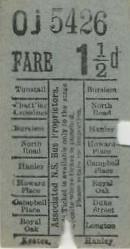 |
||||||||||||
|
In some ways these rota
operations mirrored the "omnibus
associations" found in London in horse-bus days, the last of which was
wound up in 1909. One of the more famous members of such a London
association was
Birch Bros, who expanded their operations northwards into
Hertfordshire and Bedfordshire before the enforced reorganisation of
London local services in 1934. The subject of this story is a
group of operators in the Wellington area of Shropshire who combined to
form the Shropshire Omnibus Association (SOA). |
||||||||||||||
|
Wellington is an ancient
market
town, now forming but one part of the "new town" of Telford, but in
years gone by it was much more important, serving as business centre
for the coal mining and industrial areas nearby. Back in the
1920s various small local bus operators ran services in the area, as
did the much larger Midland Red. With the Road Traffic Act
legislation pending, many of them came together and formed the SOA in
1931
(previously called the Mid Shropshire Omnibus
Association).
Two main routes were involved: (a) Wellington - Trench - Donnington (with variations at the Donnington end to Muxton Corner, Coal Wharf and Humbers) (b) Wellington - Oakengates - Wrockwardine Wood (with seven variations including Priorslee, St Georges and Lamb Corner). A third rota service existed pre-war in a south-westerly direction between Wellington and The Wrekin, this being a summer leisure service to a popular local beauty spot. Additionally the Midland Red also covered most of the SOA routes with their own frequent services. Whilst the larger operator was not originally a member of the pool, timings eventually became co-ordinated much later (as typified by the 1951 timetable below). |
||||||||||||||||||||||||||||||
|
|
||||||||||||||||||||||||||||||
|
The Association managed separate rotas for each of the routes, and each member company's vehicles and crews worked different timings over a three monthly period, thus ensuring over a period of time that the revenue from fares balanced out equitably. The workings on the rota were referred to as "schemes" and the administration was carried out by Tranter Lowe, a local accountancy practice. If they wished to sell their shares in the rota, members were only supposed to sell them within the Association to other members (although this rule was breached in later years). Before the start of SOA there were sixteen operators on Oakengates and fourteen on Donnington - most being one vehicle operations at this time. From the establishment of road service licencing in 1931 until 1933 the licences for the routes were held by the Association, but from June 1933 each operator had an individual licence. At this time there appears to have been six licenced operators on the Donnington rota, thirteen on the Oakengates rota and nine on The Wrekin rota. Eight of the nine operators on The Wrekin rota were not unique but also operated on either the Donnington or Oakengates rotas as well. |
||||||||||||||||||||||||||||||
|
|
||||||||||||||||||||||||||||||
| The timetables called for six buses on each route, and thus operations could result in not inconsiderable periods of slack time for rota members, although some of the member operators had other routes which were not part of the SOA rota operations. There was no common livery or standardisation of vehicle types, these were matters for the individual members. Thus to the outside world the appearance of the Association's vehicles could be a motley mixture at times. The Association bought tickets in bulk for members and published a timetable for the rota routes, which often also included the times for other routes run by the members outside of the rotas (such as H Brown from Oakengates to Donnington). The Donnington route benefitted from the new Central Ordnance Depot built by the army in the 1930s. This was moved here from Woolwich Arsenal and much associated housing was built for the workforce at the same time. Many of the runs on the route from Wellington terminated at the aptly named Garrison bus station. | ||||||||||||||||||||||||||||||
|
||||||||||||||||||||||||||||||
|
||||||||||||||||||||||||||||||
Although there were two
routes
operated - 'the Donnington route' and 'the Oakengates route', each of
which had several variations, especially the latter - the 1951
co-ordinated timetable leaflet, the cover of which is illustrated
above, gave only details of the 'Oakengates' services:
|
|
1. Wellington and Oakengates via Ketley (Not Sundays) 2. Wellington and New Yard via Ketley and Holyhead Road (Thursdays only) 3. Wellington and Priors Lee via Ketley, Oakengates and Snodshill (Daily) 4. Wellington and St Georges (By-Pass) via Ketley, Oakengates and Snodshill (Not Sundays) 5. Wellington and Lamb Corner via Beveley, Oakengates and Station Hill (Daily) 6. Wellington and New Yard via Ketley, Oakengates and Snodshill (Sundays only) 7. Oakengates town service (Not Sundays) Also included are Midland Red services: 894. Wellington and New Yard via Ketley and Holyhead Road (Saturdays only) 899. Wellington and New Yard via Ketley, Oakengates and Snodshill (Daily) 900. Wellington and New Yard via Ketley, Oakengates and Station Hill (Not Sundays) |
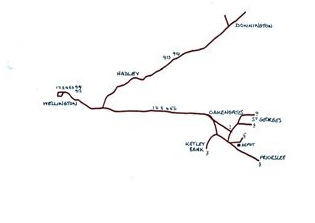 |
In combination these
services gave a weekday daytime frequency of ten
minutes (six buses per hour) on the main part of the route between
Wellington and Oakengates, comprised of 4 SOA buses and 2 Midland Red
buses. On Thursdays this increased to seven buses per hour with
the addition of the hourly route 2, giving 5 SOA buses and 2 Midland
Red buses; whilst on Saturday afternoons there were thirteen buses per
hour, 10 SOA buses and 3 Midland Red buses (their additional departure
being the 894). But of the 10 SOA buses six were short workings
between Wellington and Oakengates only on route 1. There was a
limited service on Sunday mornings but afternoon and evenings saw four
buses an hour on a fifteen minute frequency, 3 from SOA and 1 from
Midland Red (899).
|
|
| Sample pages from the April 1962 timetable
booklet for the two rota routes. There was little change between April 1962 and the January 1973 timetable below, except that some service 1 journeys became service 2 and started from Ketley Bank Estate before running via the Greyhound and Oakengates to Wellington. Much changed however between January and October 1973 (see below). |
|||||||||||||||||||||||||||
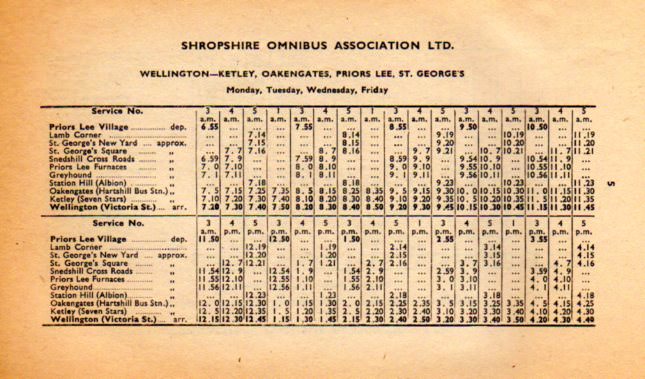 |
|||||||||||||||||||||||||||
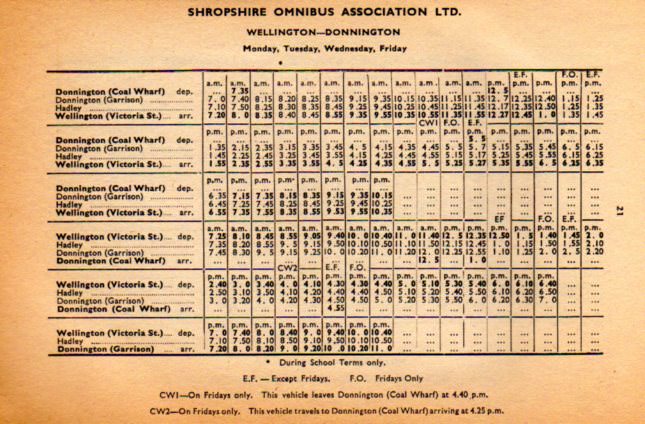 |
|||||||||||||||||||||||||||
|
|||||||||||||||||||||||||||
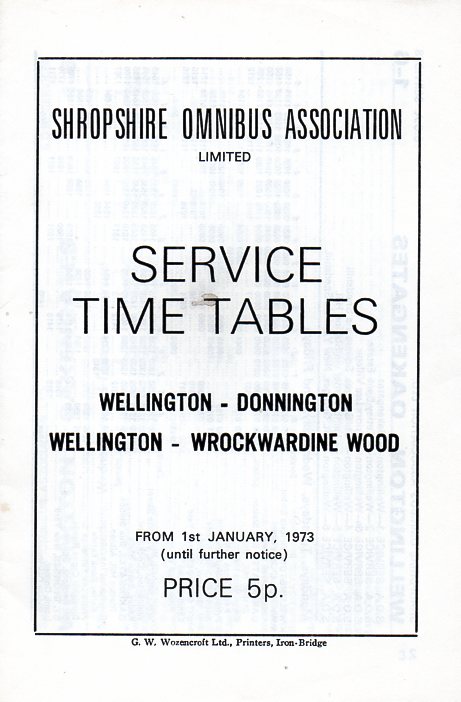
|
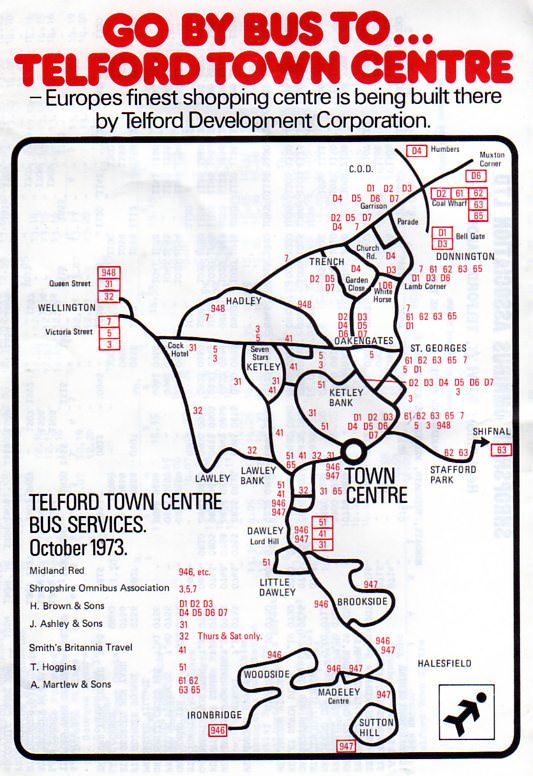 |
||||||||||||
| Plans
made far away were eventually to impact on this area with government
proposals for New Towns in the 1960s, of which one was to be built
here. Originally called Dawley New Town it was rechristened Telford in
recognition of its location astride the A5 road to Holyhead associated
with the great road builder and engineer. By 1972 there were five operators left on the Oakengates route: G Cooper with four rota shares; and H Brown, J Jones, R & M Price (Excelsior) and C & E Williams (actually being operated by a Martlew vehicle). On the Donnington route at this time there were three operators - Martlew, A T Brown and Smiths Eagle of Trench - two holding more than one share. Operationally there were now five schemes on Donnington and seven schemes on Oakengates. In the autumn of 1973 Midland Red acquired the several shares of Cooper of Oakengates, who in turn had previously bought out T Hoggins, E Smith and J Jervis in the early 1960s. Other remaining SOA members considered the sale by Cooper to be a betrayal. The January 1973 timetable showed little change from that of eleven years previously, issued in April 1962. Change came between January and October of that year though, with the new town being built the dynamics of bus operation in the area were being redefined. The map above appeared on the cover of the October 1973 SOA timetable for the Oakengates routes. It shows hourly routes 3 and 5 and a new route 7 extended to the then new Telford Town Centre on weekdays. Only route 4 now linked Wellington to St Georges New Yard and Lamb Corner once an hour. Additionally on Thursday route 6 linked New Yard to Wellington hourly, and on Saturday route 1 provided it's traditional extra short journeys between Oakengates and Wellington. On Sunday route 5 ran hourly between Lamb Corner, St Georges, Oakengates and Wellington (its former traditional route) and route 6 ran hourly between New Yard and Wellington via Priors Lee Furnaces (again the former traditional route). Also shown on the map are some of the non-rota routes of local independent operators H Brown & Sons, A Martlew & Sons, J Ashley & Sons, T Hoggins and Smith's Britannia Travel (the first two of whom still had rota shares). Meanwhile the urban areas around Wellington and Oakengates had been changing greatly in character with the growth of the new 'overspill' town of Telford, and the demise of the heavy iron and coal industries in the area. Inevitably there were resultant changes in traffic flows and shopping patterns. The end of SOA came with a sale and the final runs were on 31 March 1978, with Midland Red taking over their services on the following day. This was followed by a reorganisation with new circular routes based primarily on the Telford new town shopping centre. However it was not quite the end, as Price dissented to the sale and continued to operate one vehicle on an hourly basis for a few years after between Wellington and Muxton Corner - and at least one of the firms has continued in business through to the 21st century: the descendants of A T Brown, who have a thriving coach operation mainly on school runs and holiday tours. |
|||||||||||||
| == with many thanks to the late Chris Warn, Allan Frost, Barrie Edwards and Margaret Beards for much additional information == | |||||||||||||
|
|||||||||||||
